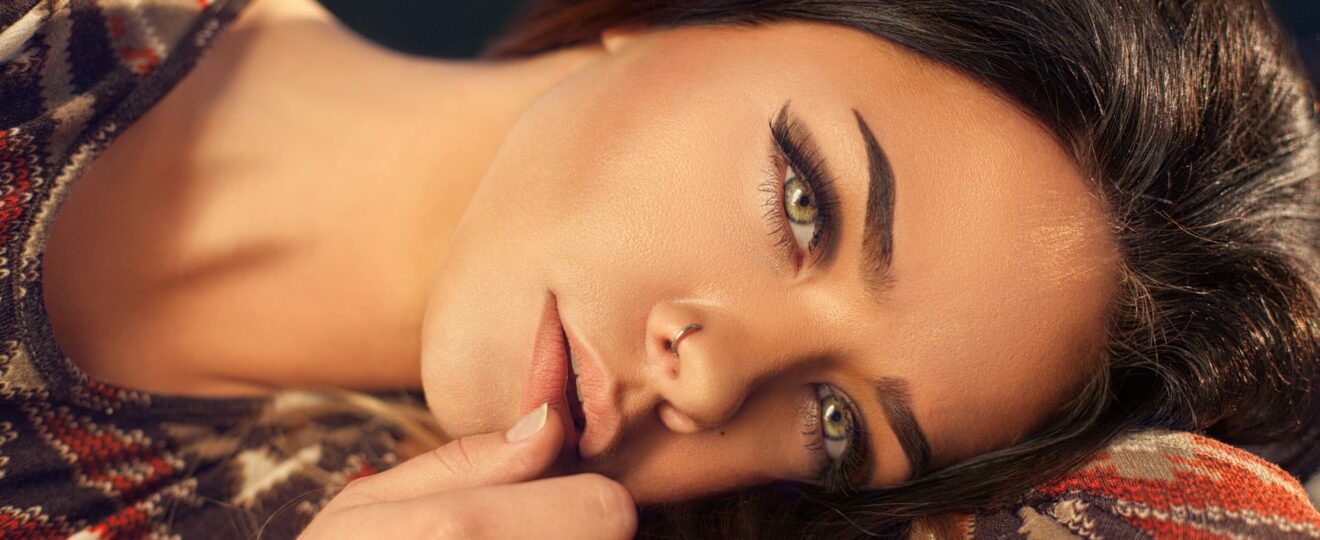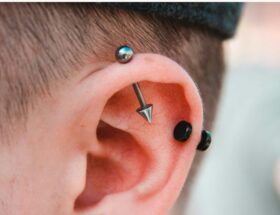Among all types of jewelry, a nose pin holds a special place as a beloved and coveted accessory for women.
Silver jewelry has been revered in Indian culture for centuries, known for its timeless allure and lustrous shine.
The popularity of silver jewelry extends beyond India, garnering global acclaim for its classic aesthetic.
Nose pins come in an array of shapes, colors, and metals, catering to diverse preferences.
However, it’s essential to consider the sensitivity of nose skin to certain metals, as oxidation over time can cause irritation.
With a plethora of options available, ranging from local retailers to upscale jewelers, selecting the perfect nose stud can be overwhelming.
While inexpensive and vibrant fashion nose studs may be appealing, it’s crucial to exercise caution to avoid potential skin issues.
To make an informed choice and ensure top-notch quality, explore the factors to consider before purchasing a nose pin.
Metal:
Nose skin sensitivity to certain metals necessitates careful selection.
Avoid nickel and opt for metals marked as “nickel-free.”
Consider platinum, palladium, yellow or white gold (with nickel-free alloys), or Bioflex.
While platinum is the priciest option, it offers unparalleled durability.
Resistant to oxidation, tarnishing, and discoloration, platinum securely holds gemstones and diamonds in place.
Opting for low-quality metal can lead to discomfort and irritation.
Size:
Selecting the appropriate size for your nose stud is paramount, and we’re not referring solely to the diamond’s dimensions!
With every nose being unique, well-crafted nose studs are available in various shaft lengths and gauges (thicknesses).
Ensure you choose a nose pin size that fits comfortably on your nose.
Online guidelines can assist you in determining your measurements, or you can enlist the help of a professional body jeweler.
Tail:
Nose studs come in a variety of tail shapes, including pin, L, U, and half U.
The tail shape impacts the ease of changing your piercing and overall comfort.
Since there isn’t a one-size-fits-all solution for tails, opt for the shape that suits you best.
Additionally, consider your nose’s angle when selecting a tail shape; for instance, if your nose bridge and nostrils are slightly slanted upwards, an L or pin shape may help conceal the tail of your stud.
When your nose stud boasts the right metal, size, and fit, you’ll hardly notice it’s there.
Appearance:
Flat nose pins are currently trending among girls of all ages, showcasing the timeless appeal of this accessory.
Regardless of age, women adorn nose pins to enhance their beauty, making it a versatile and popular choice.
What to Know About Nose Piercing?
If you’re considering getting your nose pierced, prioritizing safety and understanding proper aftercare is crucial.
Different spots on your nose can be pierced, including:
- The nares, the fleshy skin around your nostrils.
- The septum, the tougher cartilage between your nostrils.
- The soft flesh at the bottom of your septum below the cartilage.
However, nose piercing comes with health concerns, particularly because your nose is situated in the “danger triangle” of your face, between your eyebrows and upper lip.
Veins in this area are connected to your sinus cavity, raising the risk of serious infection from any procedure in this region.
Common risks associated with nose piercing include:
- Infection: Bacteria lining the inside of your nose can cause infection, and poorly sterilized equipment may introduce viruses like HIV, hepatitis B or C, or tetanus into your bloodstream.
- Bleeding: Any piercing will lead to bleeding, with septum piercings often bleeding more than pierced nares. Hematomas, swollen bruises, can also form, potentially leading to infection or facial disfigurement.
- Loose jewelry: Nose rings or stud backs may loosen or shift in the hole, posing a risk of inhalation or swallowing of small metal pieces. Loose studs or backs can also become stuck in the lining of your nose.
- Allergic reaction: Allergies to the metal in nose jewelry are possible.
- Nerve damage: Nose piercing may damage a nerve, resulting in numbness or pain.
- Scarring: Keloids, lumps of fibrous scar tissue, can develop as a result of nose piercing.
Prioritize thorough research, seek a reputable piercer, and adhere to proper aftercare protocols to minimize risks associated with nose piercing.
Nose Piercing Safety:
When considering a nose piercing, ensure it’s performed by a licensed professional; self-piercing or allowing a friend to do it is not recommended.
Prioritize safety by confirming that the piercer adheres to these procedures:
- Inquires about any health conditions or pregnancy status.
- Utilizes a sterile needle, as piercing guns cannot be adequately sterilized.
- Sterilizes nose jewelry on-site using an autoclave.
- Open the sealed needle package in your presence.
- Wears sterile gloves and cleans hands before and after piercing.
- Prepare your nose with alcohol or antiseptic liquid before piercing.
- Provides clear instructions for post-piercing care.
Pain and Healing Time:
Expect some discomfort, blood, swelling, tenderness, or bruising immediately after piercing, lasting up to 3 weeks.
Nostril piercings typically heal in 2 to 4 months, while septum piercings may take 3 to 4 months to fully heal.
Caring for Your Nose Piercing:
Follow these steps for proper care until your nose heals:
- Wash hands before touching the piercing or jewelry.
- Gently clean the nose with saline-soaked gauze, patting dry with a paper towel.
- Avoid dirty water sources like swimming pools, lakes, or hot tubs.
- Refrain from applying antibacterial ointments or moving the jewelry until fully healed.
- Sleep on clean sheets and opt for showers over baths.
Signs of a Problem:
Contact your doctor if you experience these signs of infection:
- Fever
- Red, swollen, very painful, or tender skin around the piercing
- Yellow or green discharge from the site
Will It Close Up?
Nose piercings can close up over time, even after years.
To prevent closure, it’s important to keep jewelry in your nose at all times to maintain the hole’s openness.
Cost and Safe Types of Jewelry:
Nose piercing entails two expenses: one for the piercing procedure and another for the jewelry.
Nose piercing costs typically tend to be lower compared to piercings in other body parts such as nipples or genitals.
However, nose rings crafted from expensive metals will incur a higher cost.
Safe metals commonly used for nose rings include:
- Surgical stainless steel
- Solid gold
- Titanium
- Niobium
Nickel jewelry poses a higher risk of triggering allergic reactions. Additionally, nose jewelry should be neither too large nor too heavy, as this could lead to discomfort, pain, or swelling.










